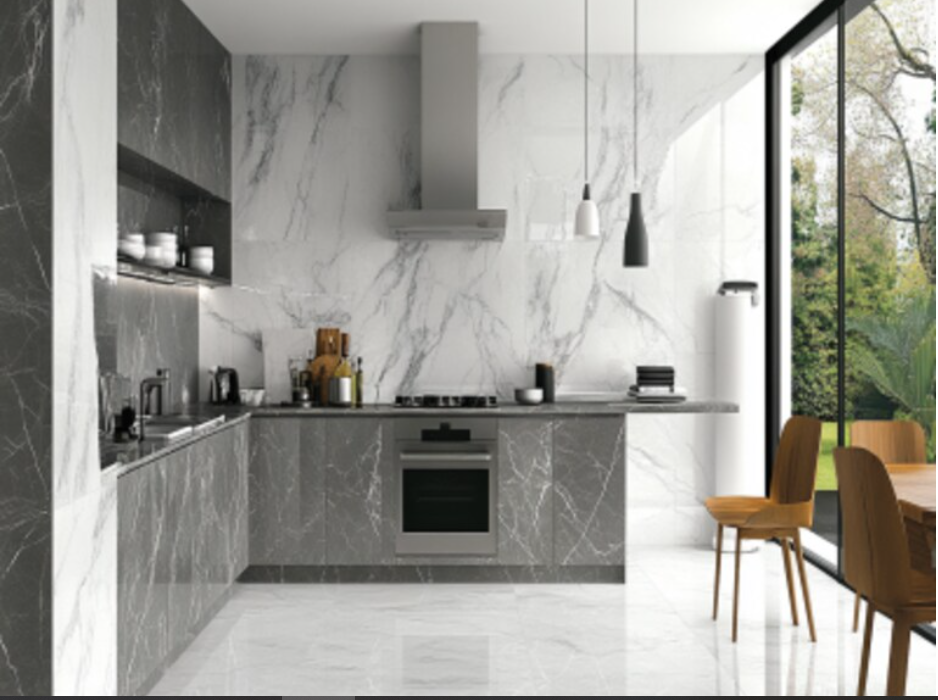Laying kitchen tiles can transform your space, but it requires careful planning and execution. You’ll want to start by choosing the right tiles that fit both your style and functionality needs. Once you’ve got that down, preparing the surface is crucial for a smooth installation. But there’s more to it than just that; understanding each step will ensure your tiles not only look great but last for years. Let’s explore how to get started.
Choosing the Right Tiles for Your Kitchen
When it comes to choosing the right tiles for your kitchen, what factors should you consider?
Start by exploring various tile materials like ceramic, porcelain, or natural stone. Each offers unique durability and maintenance levels.
Next, think about color schemes that complement your kitchen’s overall design. Light colors can make a small space feel larger, while darker shades add warmth and depth.
Consider how the tiles will interact with your cabinets, countertops, and appliances.
Lastly, don’t forget about texture—smooth tiles create a sleek look, while textured tiles can add visual interest and help with slip resistance.
Choose wisely!
Essential Tools and Materials Needed
To successfully lay kitchen tiles, you’ll need a few essential tools and materials that will make the process smoother.
Here’s what you should gather before you start:
· Tile cutter: Perfect for precise cuts based on your tile types.
· Trowel: Helps spread adhesive evenly for various installation techniques.
· Level: Ensures your tiles are laid flat and even.
· Spacers: Maintains consistent gaps between tiles for a professional look.
Having these items ready will streamline your project and help achieve the best results.
With the right tools and materials, you’re set to tackle your kitchen tile installation confidently!
Preparing the Surface for Tile Installation
Before you start laying tiles, clear the area of any furniture and appliances.
Next, inspect the subfloor for any damage or irregularities, as a solid foundation is crucial for a successful installation.
Finally, clean and level the surface to ensure the tiles adhere properly and create a smooth finish.
Clear the Area
Clearing the area is crucial for a successful tile installation. Start with kitchen decluttering to create a clean workspace. Remove all furniture, appliances, and decorations from the kitchen. This not only ensures safety but also allows for better area preparation.
- Sweep and mop the floor to remove dirt and dust.
- Check for any remaining items that might obstruct your work.
- Consider covering adjacent areas to prevent damage.
- Ensure you have proper lighting to see the details clearly.
With a clear area, you’ll be ready to move on to the next steps in your tile installation project.
Inspect the Subfloor
With the area cleared, it’s time to inspect the subfloor, as this step is vital for a successful tile installation.
First, identify the subfloor types—plywood, concrete, or cement board—and determine their condition. Look for any signs of damage, such as cracks or warping.
Next, perform moisture testing to ensure the subfloor’s dryness, as excess moisture can lead to tile failure. Use a moisture meter or seal a plastic sheet over the surface to check for condensation.
Address any issues before proceeding, as a solid, dry subfloor will help ensure your tiles adhere properly and last for years to come.
Clean and Level
Once you’ve ensured the subfloor is in good condition, it’s crucial to clean and level the surface to prepare for tile installation.
Start by removing any debris, dust, or old adhesive through thorough tile cleaning. Next, check for uneven areas that may require surface leveling. Use a self-leveling compound to fill low spots, ensuring a flat and stable base for your tiles.
· Sweep and vacuum the area
· Inspect for cracks or damage
· Apply a primer if necessary
· Allow the leveling compound to cure
Planning Your Tile Layout
Before you start laying your kitchen tiles, it’s crucial to plan your layout carefully.
Begin by measuring your space to ensure you have enough tiles for your chosen pattern. A dry layout test can help you visualize how the finished floor will look and allow you to make adjustments before committing.
Measure Your Space
As you prepare to lay your kitchen tiles, accurately measuring your space is crucial for a successful layout.
Use these tile measurement techniques and space calculation methods to ensure you have the right amount of tiles and a well-planned design.
· Measure the length and width of the area.
· Calculate the total square footage (length x width).
· Account for doors, cabinets, and appliances.
· Add a 10% waste factor for cuts and mistakes.
Choose Tile Pattern
How do you envision your kitchen’s ambiance? Choosing a tile pattern is essential for setting the right mood.
Consider different tile shapes like squares, rectangles, or hexagons, as they can dramatically affect the space’s look. Pattern variations, such as herringbone, brick, or diagonal layouts, can also add visual interest.
Think about how these patterns will flow with your cabinetry and overall design. Remember, bold patterns can create a striking focal point, while subtle designs can provide a more understated elegance.
Take your time to explore options, ensuring that your chosen layout complements your kitchen’s style perfectly.
Dry Layout Test
Once you’ve chosen your tile pattern, it’s time to conduct a dry layout test to visualize how the tiles will look in your kitchen.
This step helps ensure proper visual alignment and allows you to adjust as needed.
· Start by laying out tiles without adhesive.
· Arrange the tiles from the center outward for balance.
· Check for any awkward cuts at the edges.
· Make adjustments to achieve an even look.
Cutting Tiles for a Perfect Fit
Achieving a perfect fit for your kitchen tiles often hinges on precise cutting techniques. Start by measuring the area where the tile needs to fit, marking your tile accordingly.
For straight cuts, a tile cutter works best; simply score the tile and snap it along the line. If you need curved or intricate cuts, a wet saw is ideal. Always wear safety gear to protect yourself during tile cutting.
After cutting, double-check your measurements to ensure proper tile fitting. Taking your time with these steps will help you create a seamless, professional look in your kitchen.
Happy tiling!
Applying Adhesive and Laying the Tiles
Before you start laying your tiles, it’s crucial to apply the right adhesive to ensure a strong bond and a long-lasting installation. Tiles Paradise UK.
Choose from various tile adhesive types based on your tile material and location.
Use the following tile installation techniques for optimal results:
· Spread adhesive evenly with a notched trowel.
· Work in small sections to prevent drying.
· Press the tiles firmly into the adhesive, ensuring no air pockets.
· Use spacers to maintain consistent gaps between tiles.
Grouting the Tiles for a Seamless Finish
As you finish laying your tiles, grouting them properly is essential for achieving a seamless and polished look.
Start by choosing the right grout types—either sanded or unsanded, depending on your tile spacing. Mix the grout according to the manufacturer’s instructions for the best results.
Using a grout float, apply the mixture diagonally across the tiles, ensuring you fill all gaps. Don’t forget to wipe off excess grout with a damp sponge, being careful not to pull grout from the joints.
Allow the grout to cure for the recommended time, and you’ll have a beautifully finished tiled surface.
Sealing and Cleaning Your New Tiles
Once you’ve laid your tiles and grouted them, it’s crucial to seal and clean them to ensure they look great and last longer.
Start by selecting appropriate sealing techniques based on your tile type. Use high-quality cleaning products to remove any residue before sealing.
· Choose a sealant that matches your tile material.
· Allow the grout to cure fully before applying sealant.
· Apply sealant evenly with a brush or roller.
· Clean tiles regularly with pH-balanced cleaners to maintain their shine.
Following these steps will help protect your investment and keep your kitchen tiles looking fresh for years to come.
Tips for Maintenance and Longevity
To keep your kitchen tiles looking their best and extend their lifespan, regular maintenance is key.
Start with weekly tile cleaning using a mild detergent and soft mop to prevent dirt buildup. For deeper cleaning, consider a specialized tile cleaner every few months.
Don’t forget grout maintenance; it’s essential for a polished look. Clean grout lines with a mixture of baking soda and water or a commercial grout cleaner.
Reseal your grout annually to protect against stains and moisture.
Conclusion
You’ve now got the knowledge to lay your kitchen tiles like a pro! By choosing the right tiles, prepping your surface, and following the steps for layout, adhesive application, and grouting, you’ll achieve a stunning finish. Remember to seal and maintain your tiles for lasting beauty. With a little patience and attention to detail, your kitchen will not only look fantastic but also stand the test of time. Enjoy your newly tiled space!




